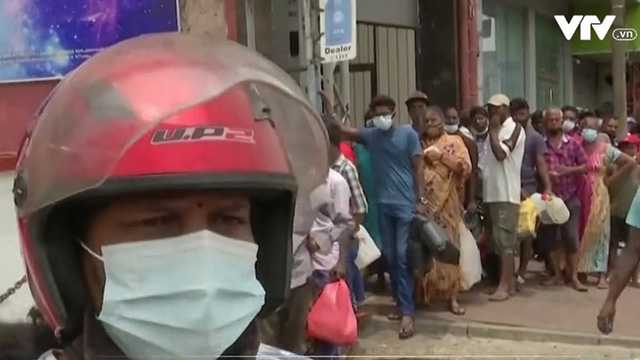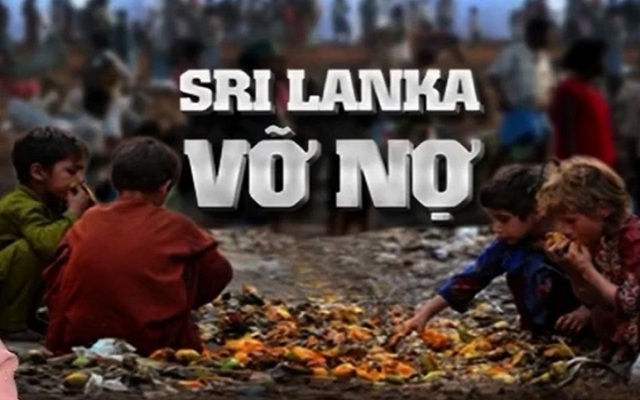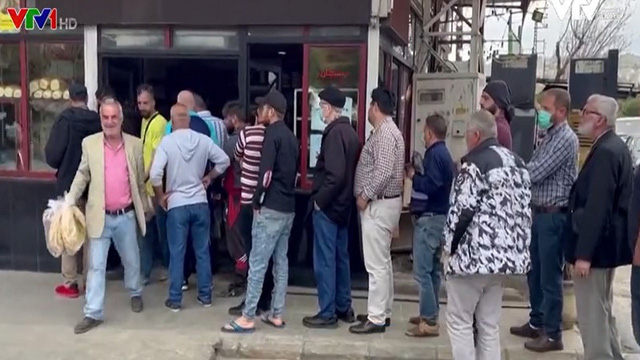The world faces a three-dimensional crisis
A bout price storm is sweeping the world due to the impact of global supply chain disruptions and economic wars between Western countries and Russia after the military campaign in Ukraine. The global economic outlook has completely changed due to the new developments. Inflation soars making “we will be poorer” and economies and businesses should prepare plans to cope with this development.
Inflation makes the rich cry too
In the world’s No. 1 economy, the US, the consumer price index (CPI) increased by 8.5% in March, the highest increase in more than 40 years. The Chairman of the US Federal Reserve (FED) has called high inflation the biggest threat to the economy at the moment. The FED raised the basic interest rate by 0.25%, the FED also left open that this is not the only increase this year. And the Fed’s rate hike will have clear impacts on developing economies.
Due to increased borrowing costs and increased debt repayment obligations in USD; investment flows, especially foreign indirect investment will be affected.

High inflation makes “we will be poorer”
The problem of inflation in the US is quite complicated, it is caused by many reasons such as scarcity of goods while consumer demand increases after the epidemic. Rising oil prices cause consumer gasoline prices to increase as well, then from gasoline prices once again impact on commodity prices. Basically, businesses are under pressure of shortage of goods, transportation costs increase, and they pass those costs on to consumers’ pockets. And it’s fine if only a few items go up in price, but if they all go up at the same time, that’s a real problem.
The Fed has taken measures to raise interest rates. Rising Fed interest rates will be a serious challenge because it will reduce the flow of new investment into developing countries. Theoretically, the Fed’s interest rate increase means that borrowing USD to invest becomes more expensive, thus indirectly affecting the investment capital flow of corporations into the markets where they are or will invest. as emerging markets. Or in the other direction, there will be investors who see the dollar appreciate will pull money out of emerging market investments, into better-yielding ones like US Treasuries. An example of that is India, foreign investment flows out of this economy in the last three months of 2021 so quickly that it caused the rupee to drop by 15%, forcing the Central Bank of India to raise interest rates.
But experts are also optimistic that the Fed can raise interest rates continuously this time compared to 2013. This time, emerging economies have prepared, so they have foreign exchange reserves and balance. better finances. At the same time, the growth prospect of the whole economy is also strong, not lame like in the years after the economic crisis.

Developing countries, including Vietnam, are carefully monitoring developments from the US’s monetary policy change to take timely response measures. Because rising interest rates in the US will reduce new investment flows into developing countries. As capital flows away, it is easy to lead to financial imbalances and developing countries need to be on the lookout for more severe debt crises.
Sri Lanka is in the midst of an economic crisis
An example of a national debt crisis that can be seen this week is the South Asian country of Sri Lanka. At the beginning of the week, Sri Lanka had to pay off its debt from international bond interest of $78 million, part of a national debt of up to $51 billion. On April 12, Sri Lanka announced that it would temporarily default on its debt. The Ministry of Finance of this country partly blamed the economic and financial difficulties on the COVID epidemic and the war in Ukraine. On the same day, the Central Bank of Sri Lanka declared it could not pay its foreign debts worth 51 billion USD, thus the country had to trigger a default.
Mr. Ali Sabry – Sri Lankan Finance Minister said: “We cannot give a rosy picture, we need to be realistic. In my view, this is the most challenging time for the economy. since independence”.

Sri Lankans wait in line to buy essentials
According to the Central Bank of Sri Lanka, Sri Lanka’s funds are now insufficient to repay the debt and will only be given priority to import essential goods such as food, medicine, gasoline and gas. The long lines of Sri Lankans waiting to buy essential necessities, the worst economic crisis since 1948 is spreading to all aspects of people’s lives, from energy, food to health care. . Inflation and a weak currency have sent commodity prices soaring. Inflation in Sri Lanka rose to an all-time high of 17.5% in March. Rice prices have increased more than six times, from Rs 80 to 500 rupees/kg, vegetable prices also doubled.
Mr. Sujith Kumarasinghe – Shop owner said: “When prices go up, sales go down because people can’t afford to buy them. Sales decrease by 50%, food and fuel prices go up, but people’s wages go up. population does not increase”.
The storm of rising commodity prices delivered a blow to Sri Lanka’s economy, exacerbating financial problems that had existed for many years in the country. It is a double deficit when borrowing to spend exceeds income while manufacturing and services do not sell, according to the Asian Development Bank. And in the current context, the government is struggling to adjust policies, implement emergency measures, and seek support from countries and international organizations. According to Sri Lankan officials, a comprehensive debt restructuring program is “inevitable”.

The world is facing a food crisis
Ukraine and Russia account for 30% of total global grain exports, supply disruptions due to conflict have caused food prices to skyrocket. Food security is seriously imbalanced in many countries, if not soon, food security will easily become a political issue with unpredictable consequences.
Every day Cindy Cueto wakes up with a question of what to eat today. She lives in a slum in the Peruvian capital, Lima, and the skyrocketing food prices force her and her neighbors to cook together to cut costs. Every day she goes to find the cheapest food in the market to buy, this is considered a strategy to survive in the current situation.
“We don’t have enough money to buy beef, so we buy bones to make soup. The prices of items have increased, so we just cook soup with bones and vegetables.”
Inflation raging worldwide has severely affected 33 million Peruvians, especially the 10 million poor who live on $3 a day. And in the Lebanese capital Beirut, long lines of people line up to buy bread.

People queue to buy bread in the Lebanese capital Beirut
Lebanon is largely dependent on food imports, with 70% of its wheat imports coming from Ukraine. The war in Ukraine has made food shortages worse. Food prices in Lebanon have increased 11-fold while the country’s currency has lost 90% of its value.
Not only poor countries, but also countries with developed economies are facing shortages of goods and food. Sunflower oil, a popular food in Germany, is becoming increasingly scarce. The shelves of sunflower oil in German supermarkets are empty.
The conflict in Ukraine has severely impacted supply chains in Germany, causing hundreds of items at supermarkets to increase in price, and even some food and drink items to be in short supply.
According to the Food and Agriculture Organization of the United Nations (FAO), world food prices recorded a new record high in March, up nearly 13% from the previous month. Both Russia and Ukraine are the world’s top food exporters. If the war in Ukraine and harsh sanctions against Russia do not end, food prices will increase even more.
* Invite readers to watch programs broadcast by Vietnam Television on TV Online and VTVGo!
at Blogtuan.info – Source: vtv.vn – Read the original article here



